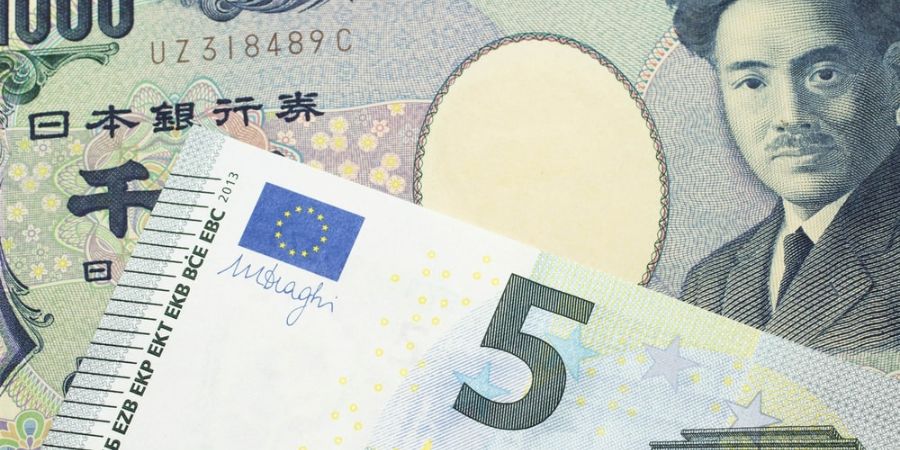EUR/JPY holds gains near 162.50, downside seems possible due to ECB’s dovish signals
- Bitcoin Poised For ‘Boring’ 2025 Close – Here’s When BTC’s Real Test Will Come
- TradingKey 2025 Markets Recap & Outlook | Global Central Banks 2025 Recap and 2026 Outlook: Navigating Post-Easing Recovery and Diverging Paths
- Gold Price Hits New High: Has Bitcoin Fully Declined?
- Gold jumps above $4,440 as geopolitical flare, Fed cut bets mount
- Breaking: Gold rises to record high above $4,500 on safe-haven flows
- US Q3 GDP Released, Will US Stocks See a "Santa Claus Rally"?【The week ahead】

EUR/JPY is climbing as the Japanese Yen weakens amid fading demand for safe-haven assets.
Contributing to the risk-on sentiment, President Trump has expressed a willingness to ease tariffs on Chinese goods.
ECB policymaker Olli Rehn suggested that further interest rate cuts may be necessary to support the Eurozone economy.
EUR/JPY gains ground after registering more than 0.50% losses in the previous session, trading around 162.40 during European hours on Tuesday. The currency cross is gaining ground as the Japanese Yen (JPY) weakens, driven by a decline in demand for traditional safe-haven assets amid renewed optimism over US-China trade relations.
US President Donald Trump has expressed a willingness to ease tariffs on Chinese goods, while Beijing has granted exemptions for certain US imports previously subject to steep levies. These developments have boosted hopes for a resolution to the prolonged trade conflict between the two economic giants.
Meanwhile, the Bank of Japan (BoJ) is scheduled to announce its policy decision on Thursday, with markets widely expecting interest rates to remain unchanged due to ongoing concerns about Japan’s fragile economy.
However, signs of rising inflation may keep the door open for potential tightening in the future. A swift trade agreement between the US and Japan could further increase the BoJ’s confidence to consider rate hikes, diverging sharply from the growing expectation that the Federal Reserve may lean toward deeper rate cuts in response to slowing global growth.
On the other front, the upside for the EUR/JPY cross may be capped as the Euro (EUR) weakens following dovish signals from the European Central Bank (ECB). ECB policymaker Olli Rehn stated on Monday that the central bank may need to lower interest rates below the neutral level to support the economy.
Earlier this month, the ECB cut rates for the seventh time this year, citing concerns that US tariffs could weigh heavily on economic growth. Following the decision, traders are now pricing in a roughly 75% chance of another rate cut in June, up from about 60% prior, according to data from LSEG.
Risk sentiment FAQs
In the world of financial jargon the two widely used terms “risk-on” and “risk off'' refer to the level of risk that investors are willing to stomach during the period referenced. In a “risk-on” market, investors are optimistic about the future and more willing to buy risky assets. In a “risk-off” market investors start to ‘play it safe’ because they are worried about the future, and therefore buy less risky assets that are more certain of bringing a return, even if it is relatively modest.
Typically, during periods of “risk-on”, stock markets will rise, most commodities – except Gold – will also gain in value, since they benefit from a positive growth outlook. The currencies of nations that are heavy commodity exporters strengthen because of increased demand, and Cryptocurrencies rise. In a “risk-off” market, Bonds go up – especially major government Bonds – Gold shines, and safe-haven currencies such as the Japanese Yen, Swiss Franc and US Dollar all benefit.
The Australian Dollar (AUD), the Canadian Dollar (CAD), the New Zealand Dollar (NZD) and minor FX like the Ruble (RUB) and the South African Rand (ZAR), all tend to rise in markets that are “risk-on”. This is because the economies of these currencies are heavily reliant on commodity exports for growth, and commodities tend to rise in price during risk-on periods. This is because investors foresee greater demand for raw materials in the future due to heightened economic activity.
The major currencies that tend to rise during periods of “risk-off” are the US Dollar (USD), the Japanese Yen (JPY) and the Swiss Franc (CHF). The US Dollar, because it is the world’s reserve currency, and because in times of crisis investors buy US government debt, which is seen as safe because the largest economy in the world is unlikely to default. The Yen, from increased demand for Japanese government bonds, because a high proportion are held by domestic investors who are unlikely to dump them – even in a crisis. The Swiss Franc, because strict Swiss banking laws offer investors enhanced capital protection.
Read more
* The content presented above, whether from a third party or not, is considered as general advice only. This article should not be construed as containing investment advice, investment recommendations, an offer of or solicitation for any transactions in financial instruments.

